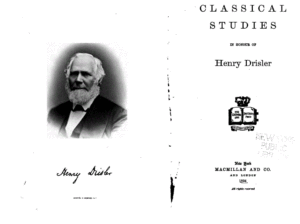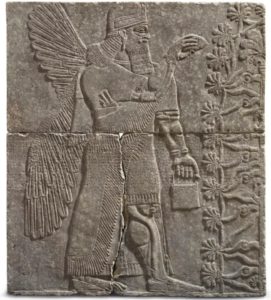In an editorial commemorating the first twenty volumes of the State Archives of Assyria Bulletin (vol. 20 [2013-14], pp. 1-31), the great Assyriologist Frederick Mario Fales observed (p. 6 n. 11) that the earliest Festschrift of which he was aware with content relevant to the field of Near Eastern studies is Orientalische Studien Theodor Nöldeke zum siebzigsten Geburtstag (2. März 1906) gewidmet von Freunden und Schülern und in ihrem Auftrag, edited by Carl Bezold (Gieszen: Verlag von Alfred Töpelmann, 1906).

Quite by chance I have come across an older example, from the United States in fact: Classical Studies in Honour of Henry Drisler (New York: Macmillan and Co., 1894). Although focused primarily on Greek and Latin, it also contains essays such as “References to Zoroaster in Syriac and Arabic Literature” by Richard J. H. Gottheil and “Herodotus vii. 61, or Ancient Persian Armour” by A. V. Williams Jackson.
This discovery has prompted me to be on the lookout for earlier examples, which I will post here as I encounter them. This project serves no scholarly purpose whatsoever, save to satisfy my own curiosity.
Incidentally, Fales’ entire editorial is very much worth reading (as is all of his scholarship) for its insights on how the field of Near Eastern studies has changed since 1987.


